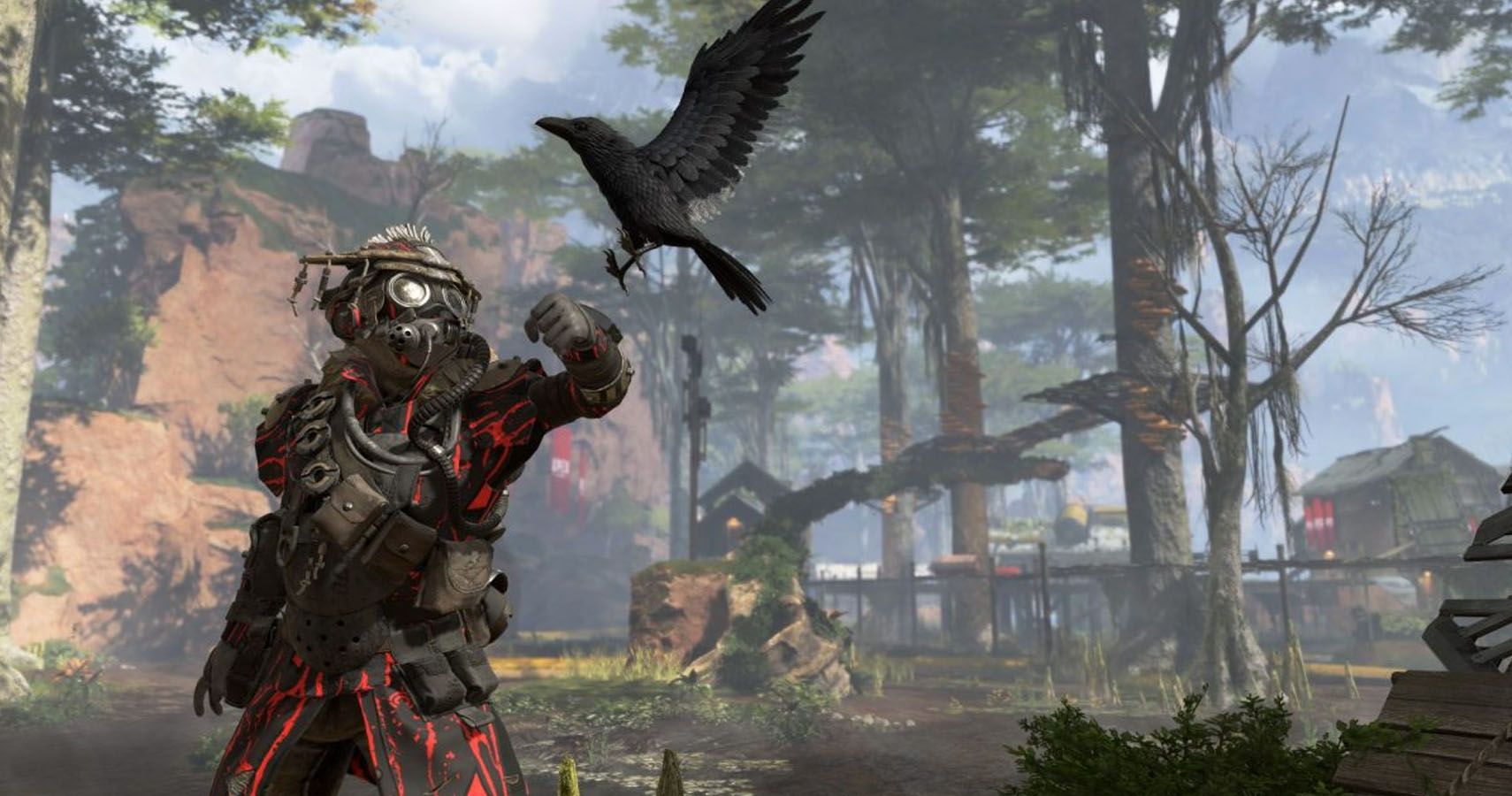The free-to-play pay model for video games is proving to be increasingly popular, leaving many to wonder what players can expect in the future. With titles like Fortnite, Apex Legends, Smite, and Warframe, developers are discovering that, when the upfront costs of these experiences are dropped, players are more likely to spend extra money in-game, leading to increased profits. In reality, we will probably never see this type of pay-method completely replace the full-priced game. However, we can expect to see this become a viable secondary game-type for many publishers. When that becomes the norm, as more free-to-play titles release, we could see alternative revenue methods implemented that could either ease the cost for many players or provide a little more stability for developers and publishers.
Free-to-play has existed in some form or fashion for decades, whether it was the PC “shareware” of the late 1980s, early 1990s like Wolfenstein 3D, or more recently, on mobile devices. The low cost of entry is a great way to draw interest from players, and when developed the right way, game makers can influence the purchasing decisions of the userbase through microtransactions. In reality, it’s strange that this idea has taken so long to catch on with the home-market crowd, but perhaps players just needed better online capabilities to constantly keep coming back.
RELATED: Free To Play Pokémon Game Announced - And RELEASED - For Switch And Smartphones
Now that we have reached the point where this method can work, we can see a lot of similarities between this new trend compared with gaming fads over the last decade. In fact, we can draw many comparisons with massively multiplayer online games (MMOs). While the genre is still very healthy, it doesn’t dominate the industry conversation like it used to. Still, before that regression, many studios looked to follow the success of World of Warcraft with their own brands. DCs characters were lent to DCU Online, which allowed players to live their best life as a superhero. Square Enix turned Final Fantasy into an MMO, and even Star Wars jumped into the genre with Star Wars: The Old Republic. That’s without mentioning titles like Elder Scrolls Online, Lord Of The Rings Online, Warhammer Online, and even Dungeons and Dragons Online. Admittedly, some of those series’ attempted to hop on the MMO train before the boom, however, there was a renewed focus after 2004 (the release year of World of Warcraft) to make serious strides in the genre.
This is probably the next logical step for free-to-play titles. Established brands are always an easier sell than creating something entirely new, and we’re actually starting to see this now. In fact, the new kid on the block, Respawns’s Apex Legends, takes place in the Titanfall universe. This could be a growing trend as fighting franchises like Street Fighter, King of Fighters, Arms, or even Guilty Gear could lend themselves nicely to this pay-method, even as secondary offerings alongside the main titles. With all that in mind, EA is probably salivating at the money Apex Legends has brought in and would want to jump on the chance to replicate that success with their more established brands. Star Wars would be the logical choice, though the Battlefront franchise would have probably worked best with this pay-method.
The publisher also creates the video game adaptations for the biggest sports franchises, and while they’re big money-makers, they could lend themselves nicely to the free-to-play model as well, at least in a more pro-consumer way. With properties like the NHL, NFL, or Fifa, EA could offer their sports catalog free of charge, and require the user to pay for stat upgrades, roster updates, league expansions, or even yearly events. This is probably the most unlikely scenario, but it could be a great way to take advantage of a payment method that’s proving to provide a great revenue stream. Instead of going straight for their biggest money makers, they could also offer other spin-off games, like a fantasy league or an NBA Jam revival.
RELATED: NINJA THINKS FORTNITE NEEDS TO ADOPT APEX LEGEND'S REVIVE SYSTEM
Looking back at Apex Legends, however, perhaps secondary franchises could work better. While publishers flock to make their game the next big thing, there will be casualties. Making a game is expensive, and without that introductory cost of $69.99, some companies won’t be able to stay afloat if their title doesn’t succeed. With MMOs—which have historically relied heavily on the subscription service pay model—we saw this in action with Funcom’s Age of Conan, APB: All Points Bulletin and many others. Much like the aforementioned genre, free-to-play games require a type of dedication from players that isn’t wholly sustainable as more titles jockey for position. There will be failures, and with the rising costs of game development (and almost no safety net), there will be companies who bet too much on this pay-method and can't sustain themselves as the market continues to saturate itself.
Still, it doesn’t have to be gloom and doom. Publishers and developers could offset the initial “loss” with brand alliances or even commercials. Sega recently tested this idea out when re-releasing their old Genesis titles on mobile devices. Instead of charging $3 to $5 USD for a port of Phantasy Star II or Sonic The Hedgehog (which would yield lower sales due to a perceived price point on the App Store or Google Play Store), the Japanese publisher opted to offer the games for free, including commercials intermittently throughout gameplay. This could upset users who are playing something more fast-paced and action-oriented like Fortnite or Apex Legends. However, dropping ads during match-making, after a player dies, or after a match, could be viable solutions. This way, it wouldn’t interrupt the flow of play too much, so fans might not revolt. Recently, Weezer used Fortnite to advertise their newest album, with the creation of a new area for players to roam around in. Perhaps this could be a similar feature for other games, but with brands like Pepsi.
It doesn’t have to be so blatant either. Crazy Taxi, while not a free-to-play game, was an effective commercial for brands like Tower Records, KFC, and Levi's Jeans. Mario Kart 8 saw an interesting brand deal with Mercedes, allowing users to download a little GLA crossover and other classic cars from the automaker to use in real races. It’s actually surprising to see this hasn’t been used to a greater effect yet, but we’re certain it will be more common as free-to-play becomes implemented to a greater effect throughout the industry.
That’s not the only outside revenue source we could see either. Esports are growing at a crazy pace, with a passionate audience that fills arenas around the world. Maybe, leagues or teams could start to be more active in cultivating both a larger viewership and prospect pool by partnering with developers to design games that cater to their audiences' viewing habits. There would have to be a lot of data to sift through for this sort of thing, but it could also be a way for specific leagues to separate themselves from one another.
The movement of free-to-play gaming from predominately mobile platforms to full-fledged console games is something that will probably have a monumental effect on the gaming industry as a whole. As more players jump into titles like Warframe or Fortnite, other publishers and developers will want a piece of the pie, yet there’s only so much to go around. It will be interesting to see how the industry will manage that side, but with the right franchises and effective brand deals, the free-to-play movement could be here to stay.




